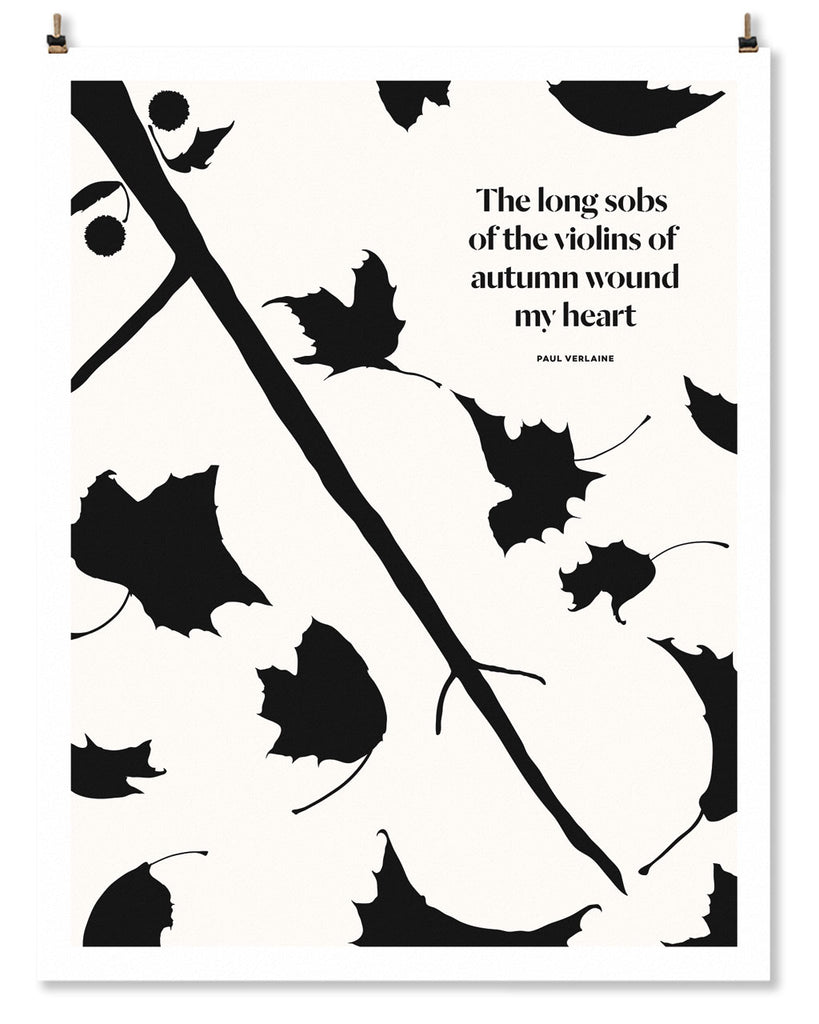
Waxing Poetic

This post was originally published on our old blog in July of 2014.
Last week, Nichole and I paid a visit to the Musée des Lettres et Manuscrits. They had an amazing collection of original manuscripts, including some from notable French writers, and they inspired a few designs. More on the museum later but for now I'll just add that, apart from the astounding whisky list at Verjus, this museum was probably the highlight of the trip for me. Hopefully, the whisky balances out the museum geek factor. Yeah, prolly not.
Having just seen Verlaine's manuscript for "Cellulairement" (which he wrote in prison after shooting Rimbaud!), I came up with the idea to do a pair of designs for Verlaine and Rimbaud that would compliment and contrast each other in some way. Given their styles and poetic dispositions, I wanted Verlaine to incorporate white space, and Rimbaud to be essentially black. The two men who were so close, were quite different in their temperament: Verlaine up in the air with his words and thoughts and Rimbaud down in the depths. I re-read Autumn Song by Verlaine and The Drunken Boat by Rimbaud - two favorites and easy choices. Verlaine first. Like his language, I wanted the objects in the illustration to define the subject playfully and indirectly in negative space. Rimbaud was trickier (how appropriate!). I read The Drunken Boat again and became obsessed with the idea of monsters in the deep - the Behemoths, Serpents and Leviathans that the boat encounters on its journey - and how those things become part of you. Rimbaud was young - and a little dramatic - but he was fearless. In many ways, he was both the boat and the leviathan, the wildman and the wilderness.



I played with some sketches in the Tuilleries, and ultimately arrived at this design. The next day, while Nichole took some photos in the rain, I was thinking about Autumn - leaves falling, transience, all that - and we got to talking about Keats. I like Keats. But Nichole *loves* Keats, so I knew that I had to do a design for her, and that it had to be good. Unlike the self-destructive Rimbaud, Keats was terrified of dying, obsessed with the eternal and the transient. I asked Nichole what her favorite Keats line was and instantly regretted it. She threw down the gauntlet. "Beauty is truth, truth beauty." Shit. My head spun with 50 ways to screw that one up. It had to be simple. I played with an idea about a leaf, that was at once fully alive and progressively decomposing. Life is beautiful and brief. I suddenly missed my kids. I'm really happy with the design. I hope Nichole likes it as much as I do and that it does Keats justice.


